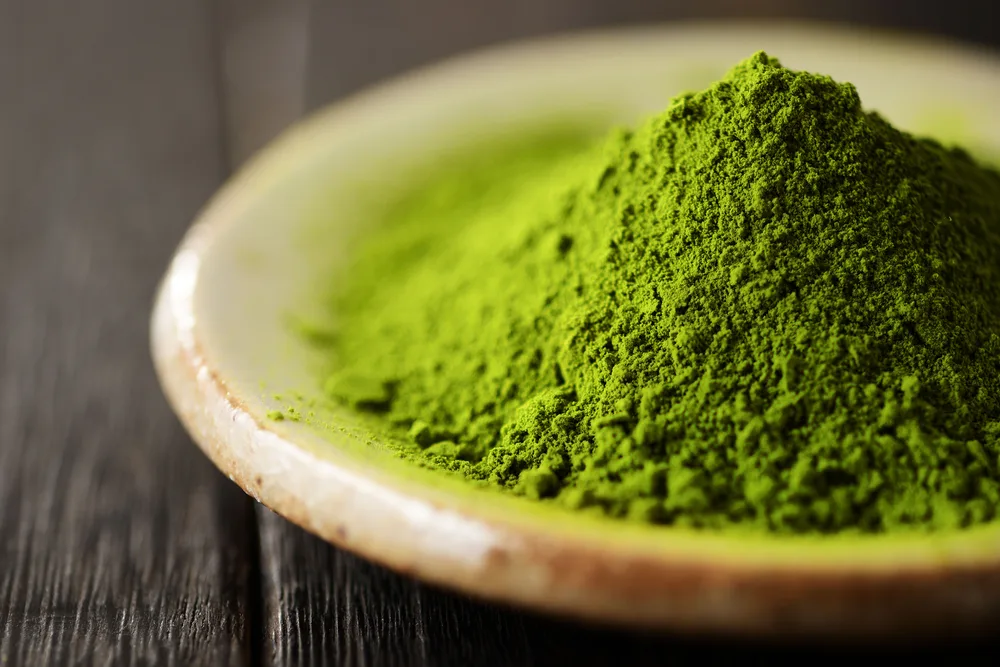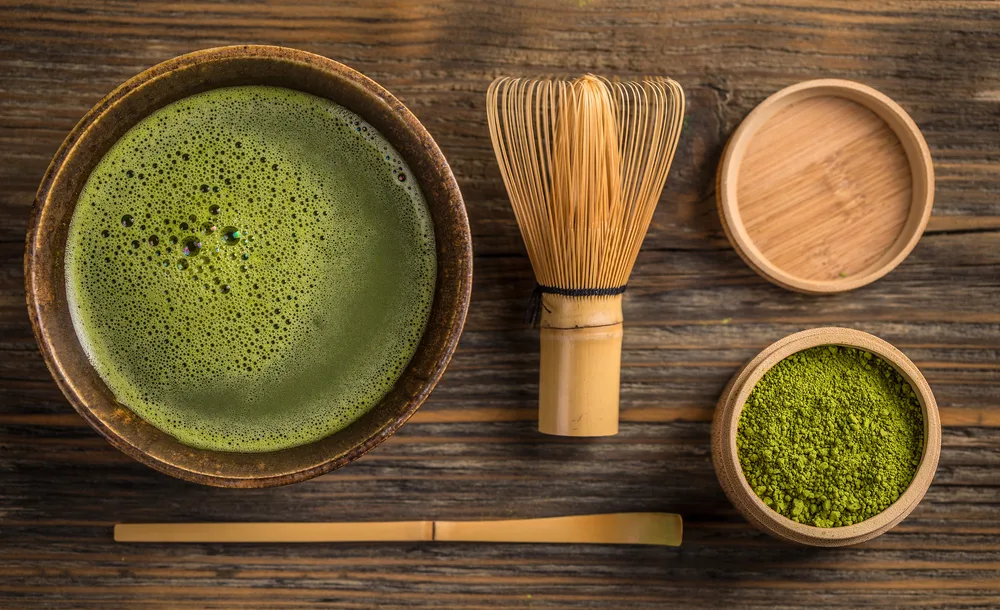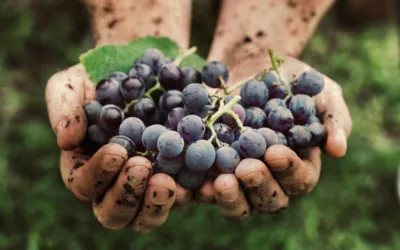Matcha, the Beyonce of Tea
You are either already a matcha aficionado like myself, or else you’ve gotten wind of its magical superpowers. To be honest, its superstar hype should come as no surprise because, quite frankly, matcha can out-twerk any other tea, any day of the week.
Drinking one cup of matcha is equivalent to drinking 10 cups of regular green tea regarding its nutrient value. The secret behind matcha tea’s superpower is found in its polyphenol compounds called catechins, which are a form of antioxidants. Catechins are so ‘mega’ that they are thought to even be more powerful than both vitamins C and E in stopping oxidative damage to the cells. To boot, these unique polyphenol antioxidants in matcha have a very dense vitamin and mineral content due to the fact that matcha contains the entire tea leaves, providing a more concentrated source of its nutrients.

To put it in perspective, more than half of the dry weight of matcha is composed of polyphenols and catechins. These nutrients protect against infection and cellular oxidation, improve energy and endurance, reduce inflammation and LDL cholesterol, and possess potential antitumor properties, among others. When we drink matcha everyday, we are effectively taking a high-powered multi-vitamin.
While it naturally contains caffeine, it’s about half the amount that coffee has, so you don’t have to deal with jitters and crashes. It provides a steady, sustained release of energy throughout the day, keeping you calm and focused, unlike the racing heart and hard crashes you often get with coffee. Crazy in love yet? Ok, get ready…
What’s Happening When I Drink Matcha?
1. Promotes Weight Loss
Several promising studies have found that matcha tea could help promote and sustain long-lasting weight loss. For example, one study in the American Journal of Clinical Nutrition found that drinking a tea high in catechins for 12 weeks led to significant reductions in fat mass, BMI, body weight and waist circumference compared to a control group.
2. Benefits Exercise Performance
Clinical tests suggest that matcha can help speed up muscle recovery in athletes whose focus is high-intensity workouts. Other studies show that pairing green tea with physical activity can increase energy expenditure, increase fat-burning, enhance endurance and reduce muscle damage.
3. Promotes an Alert Calm
Matcha induces a feeling of ‘alert calm,’ due to the powerful combination of L-theanine and caffeine. By drinking matcha, you can increase levels of L-theanine, which promotes alpha waves, leading to a state of relaxed alertness. L-theanine also helps increase levels of dopamine and GABA in the brain, which could benefit conditions like anxiety.
Due to the conditions in which it is grown, it’s estimated that matcha tea may contain up to five times as much L-theanine as regular green tea.
4. Reduces Risk of Heart Disease
Due to its high antioxidants and catechins, studies have shown that green tea (generally) may help reduce the risk of heart problems. In fact, one study in over 40,000 people found that those who drank more than five cups of green tea daily had a 26% lower risk of death from heart attack or stroke compared to those who drank less than one cup of green tea daily. Research has also found that green tea helps lower cholesterol levels and reduce blood pressure, also protecting against heart disease.
5. Lowers Risk of Type 2 Diabetes
Making simple changes to your diet and lifestyle is one of the best ways to prevent Type 2 diabetes, and some research suggests that adding matcha to your routine may be especially beneficial. For instance, one study published in the Annals of Internal Medicine found that consumption of green tea was associated with a lower risk of developing diabetes after adjusting for age, sex, body mass index and other risk factors.
Another study published in the American Journal of Clinical Nutrition found that green tea consumption decreased blood sugar levels and improved long-term blood sugar control. Not only that, but green tea also led to a significant reduction in insulin levels as well.
6. Detoxifies the Body
Matcha’s rich green color is the result of its high chlorophyll levels. Chlorophyll is a type of plant pigment responsible for the absorption of light in the process of photosynthesis, which creates energy. In addition to giving matcha its signature vibrant hue, chlorophyll also aids in detoxification and can help promote the elimination of unwanted toxins, chemicals and heavy metals from the body. For this reason, consuming a daily cup of matcha tea is a great detox drink and an easy way to boost your intake of chlorophyll.
But as we are talking about detoxifying the body, like most things, not all matcha is created equal. So make sure to:
- Check the ingredients label and look for a matcha powder that only contains matcha
- Opt for organic and non-GMO varieties whenever possible
- Ceremonial-grade matcha is ideal for making properly whisked tea while culinary-grade can be used to make tea, lattes, baked goods and smoothies
- Although you can find matcha in tea bag form as well, keep in mind that you won’t be consuming the whole leaf. Look for matcha powder.
- Matcha purity and quality do come at a cost, and a low price tag can often be a sign of a poor-quality product
- Although Chinese matcha is cheaper, it may be more likely to contain contaminants and pesticides than Japanese matcha.

How to Make It
Directions can vary, but here is an easy method for how to prepare matcha properly:
- Fill a teapot or kettle with fresh, filtered water and heat to just short of boiling.
- Add 1 teaspoon of matcha powder to the bowl or cup.
- Add 2 ounces of water that is almost boiling.
- Whisk (ideally with a bamboo brush or matcha whisk) water and powder briskly in a straight line M or Z motion (not circular) for a minute until it looks thick and frothy with tiny bubbles. Matcha powder can clump, which is why it is important to whisk it in a straight line.
- Pour matcha into your cup and fill the rest with hot water (and or non-dairy milk) to your desired amount.
Risks and Side Effects
May induce twerking.
More from Lifestyle
How Inflammation Is Quietly Accelerating Your Aging
We often think of inflammation as the body’s natural response to an injury or some form of tissue damage. This form of acute inflammation is designed to alert our bodies, eliminate harmful invaders and promote tissue repair. But there is a difference between acute/healthy inflammation and chronic/unhealthy inflammation.
Top Tips for People in Pain
My Top Tips for People in PainBy: Ashley Dew So many people in our society are unfortunately dealing with pain on a daily basis. I am not talking about acute pain that comes from acute inflammation, which is normal and important for healing. Chronic pain is...
How to Enjoy the Holidays Without Sacrificing Your Health
How to Enjoy the Holidays Without Sacrificing Your Health While we should all be enjoying this wonderful time of year, it is equally important to enjoy it in a way that we aren’t sacrificing our health and packing on the pounds. Holidays are a time when we are...
How to Reverse Cognitive Decline
Steps to Reverse Cognitive Decline When we think about chronic disease, it’s not uncommon to focus on heart disease, cancer, diabetes, and obesity. These illnesses affect the lives of so many families and duly get a lot of attention in the health and medical...
Benefits of Cold Plunging
Benefits of Cold Water 'Dips'Now that summer is fast approaching, I thought it would be an acceptable time to talk to you about the amazing health benefits of ice baths. You have likely heard a lot of discussion recently about cold plunging because it is a ‘new’ buzz...
Glyphosate: What it is and Why You Should Care
Glyphosate: What it is and Why You Should Care Glyphosate is the most widely-used herbicide in the world. It first went on the market in 1974 as a weed killer and to dry crops out quickly before harvest. Roundup and other glyphosate-based herbicides are still...
Natural Wine: Why you should make the Switch
Natural Wine: Why you Should Make the Switch Natural wine, though around since 7000 BC, has become a mark of swank in certain social circles and cities around the world due to its magical taste, purity and health benefits. As a result, natural wines are all the...
How to to Pimp your Vision Board
The new year brings with it a fresh space to create, to think big and to learn how to visualize your goals into existence. You already have what you need in order to build the life you want. You just have to trust that no matter whether something went wrong in the past, you are fully capable of doing things right this time – and it starts with visualizing!
How to Keep the Promises We Make to Ourselves
As the year turned from 2022 to 2023, millions of us resolved to reinvent ourselves into a polished, new and improved version. Some of us pledged to exercise more, use social media less, better respect our inherent needs, drink more water, rise earlier, read more books, eat healthier, journal, reduce our carbon footprint, cut alcohol out for some time, and learn to meditate…. Any of this sound familiar?
Seven Questions for the New Year
Seven Questions for the New YearWhether you are a ‘resolution maker’ or not, here are a few simple, yet reflective questions that can help steer the course for an incredible 2023.1. What is one thing you would like to celebrate about 2022? Before you put on your...










